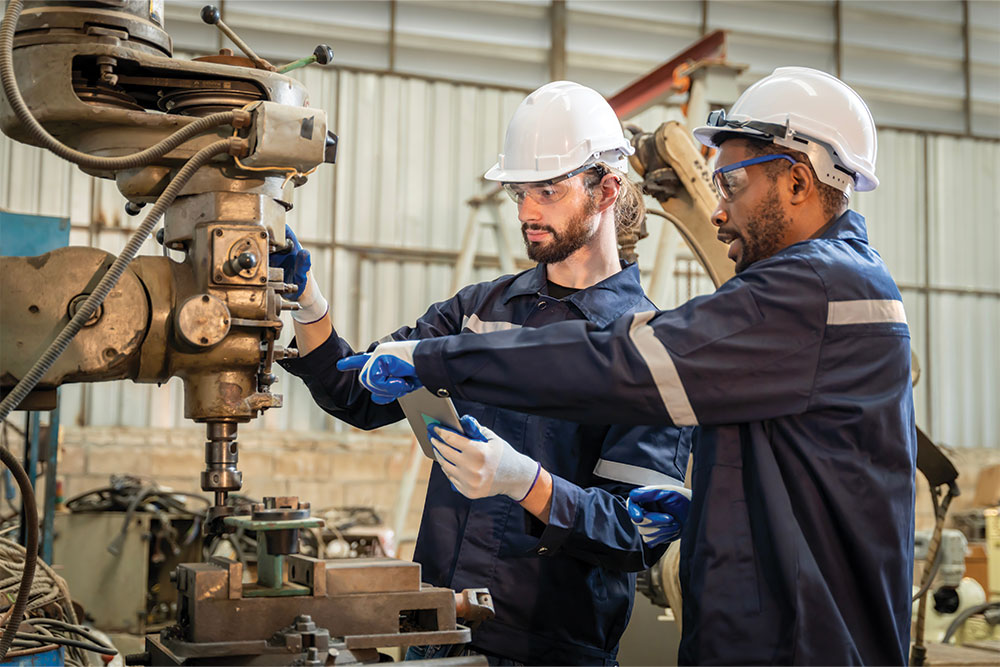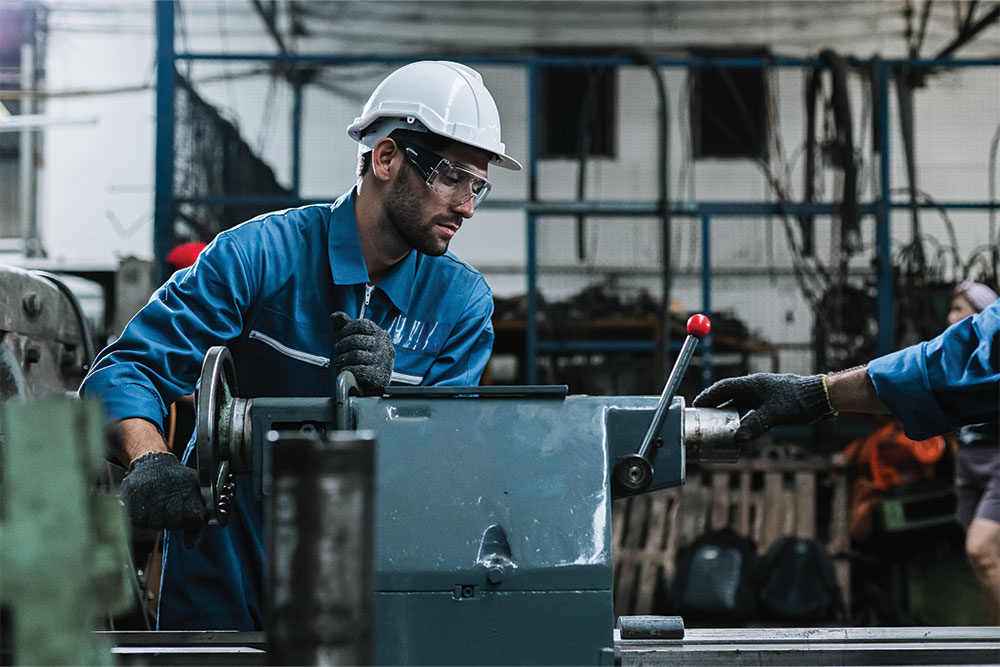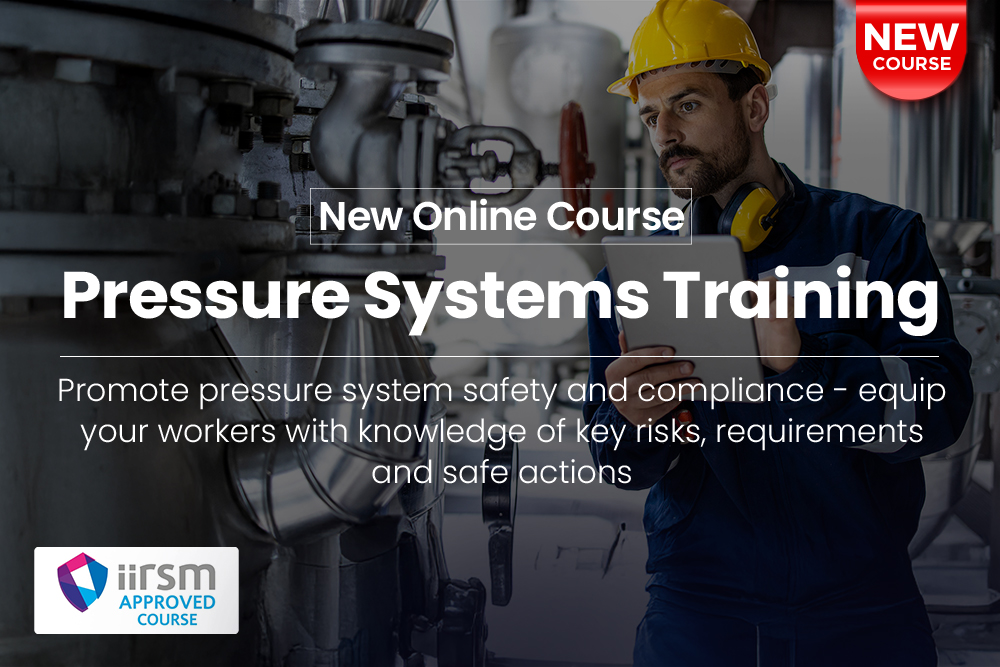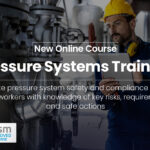
Complying with equipment maintenance regulations is a legal requirement.
Poorly maintained machinery is unpredictable. It can create unforeseen hazards that put workers at risk.
Maintaining equipment also carries its own set of risks. Numerous workers have sustained injuries during repair work because their employers failed to adequately plan safe maintenance procedures.
This is where the Provision and Use of Work Equipment Regulations (PUWER) come into play. PUWER sets out equipment maintenance regulations on keeping equipment in safe working order and establishing safe procedures to protect staff during maintenance work.
This guide explains how to comply with PUWER and help ensure the efficiency of your work equipment and the safety of your support staff.
PUWER – The Work Equipment Regulations
PUWER sets out what employers must do to make equipment in their workplace safe to use. It covers everything that can be considered work equipment, from hand tools to plant and heavy machinery.
As per the regulations, any equipment used in your workplace must be:
- Suitable for the intended task
- Safe for use
- Maintained in efficient working order
- Inspected regularly to confirm all of the above
- Used exclusively by people given adequate information, instruction and training
Fulfilling these duties is relatively straightforward for simple equipment. For example, the Health and Safety Executive (HSE) won’t expect you to subject your screwdrivers to regular inspection. But other equipment will need much more from you.
As equipment complexity increases, so does the risk level. As a result, PUWER compliance also becomes more demanding and, for many health and safety professionals, intimidating.
We’ve written about PUWER compliance before because many duty holders struggle with the regulations. Here, we’re focusing on PUWER equipment maintenance regulations to help you develop safe, compliant processes for your workplace.
Why Equipment Maintenance is Essential
Safety is the first reason your work equipment must be well maintained. Defective or faulty machinery can create unforeseen hazards for your workers and support staff.
Workers have also been known to implement unsafe workarounds if machinery routinely fails. Faulty guards may be removed altogether, for example.
Breakdowns themselves also increase workplace risk levels. Technicians or support staff will need to step in for urgent repairs. Ad hoc maintenance puts more bodies in harm’s way and is more difficult to manage safely.
Properly planned and controlled maintenance is always preferable to reactive emergency repairs. It lets you establish safe procedures and minimise the risks your support staff are exposed to.
PUWER Equipment Maintenance Regulations
PUWER equipment maintenance regulations can be further broken down into two fundamental duties:
- Work equipment is maintained in efficient order
- Maintenance work is carried out safely
Any maintenance work must also be recorded.
‘Efficient’ in this context refers to safety, not performance. Of course, well-maintained equipment runs more smoothly, often allowing for greater productivity. But this isn’t the primary reason for making equipment maintenance a priority.

1. Maintaining Equipment in Efficient Order
Under PUWER, employers must plan and carry out maintenance of all equipment they provide.
There are two approaches to do this, depending on the nature and age of the equipment.
Equipment that Complies with the Supply of Machinery (Safety) Regulations 2008
Equipment manufactured within the UK since 2008 should comply with the Supply of Machinery (Safety) Regulations 2008 (SMSR).
Under SMSR, manufacturers must consider how to make maintenance safe when designing and constructing machinery. They must also provide instructions on the safe maintenance of any equipment.
Maintenance should be straightforward and safe if you use equipment as the manufacturer intended and follow their guidance.
Older or Modified Equipment
Equipment that predates SMSR, comes from outside the UK or has been modified in some way requires a different approach. You must complete a risk assessment of the equipment, considering hazards during operation and maintenance. From there, you can then establish your own safe maintenance procedures.
Because they’re critical to PUWER compliance and every aspect of equipment safety, risk assessments can only be conducted by competent people. You need to trust your assessors have the necessary knowledge, experience and training to identify hazards to which operators and maintenance workers will be exposed. It often helps to involve those workers themselves, as they’ll have first-hand experience with the equipment.
2. Safe Maintenance Procedures
It’s essential to establish safe maintenance procedures using the manufacturer’s guidance and risk assessment. Consider the hazards your maintenance workers will be exposed to and determine adequate control measures. Control measures include providing staff with adequate instruction and training as well as any necessary personal protective equipment.
It’s also necessary to make machinery safe before any maintenance work can begin.
Ideally, maintenance work should happen during quiet periods when as few workers are present as possible. Keeping other staff away from machinery during maintenance puts them out of harm’s way. For the same reason, it’s important to isolate the work area and clearly signpost when maintenance is happening.
Next, consider the machinery’s moving parts and power supply. Maintenance work is safer when the machinery is completely cut off from any power supply. You can be sure machinery has been safely isolated from its power sources by following a LOTOTO procedure.
LOTOTO stands for ‘Lock Out, Tag Out, Try Out.’ You can read about LOTOTO procedures here. But in summary, they involve:
- Isolating the machine from any power sources
- Applying locks to prevent power from being switched back on during maintenance work
- Confirming machinery is in a ‘zero-energy’ state, meaning all hazardous energy has been reduced to zero
- Trying out the machinery’s normal controls to ensure all isolation measures and locks are working
Competence
Maintenance work must also only be done by those deemed competent. Competence depends partly on receiving the proper training, which is covered by Regulation 8 of PUWER.
Under Regulation 8, all workers must be given adequate instruction, information and training to do their jobs safely. This includes maintenance tasks. You’ll often be able to provide this training in-house but it isn’t guaranteed.
What’s needed to make someone competent scales with the complexity and risk of equipment. Sometimes, seeking the manufacturer’s or a specialist’s input is necessary to maintain high-risk machinery.

PUWER Inspections and Maintenance
Equipment inspections are another essential duty linked to maintenance. High-risk equipment should be subjected to regular PUWER thorough examinations, a process referred to as a PUWER inspection.
PUWER inspections check equipment for any faults or issues that may threaten its safe operation.
The outcomes of these inspections will directly impact your maintenance plans. They should direct you to faults that need fixing and confirm safety features are present and working.
Based on the PUWER inspection report, you may also change the frequency of maintenance work. Equipment that shows little to no deterioration between examinations may need less attention. Of course, the reverse is also true. Persistent failings should highlight that maintenance needs to be stepped up, or the machine may need replacement.
General Advice for Maintaining Equipment
PUWER has a broad scope, so listing everything you need to consider when complying with its equipment maintenance regulations would be unrealistic. Compliance is always different for different equipment and work environments.
This variety is why the HSE offers detailed guidance, which you can find here.
But there are some general tips you should follow to ensure compliance with maintenance regulations. Best practice always requires you to:
- Ensure maintenance workers are competent
- Schedule maintenance regularly (refer to your risk assessment, manufacturer’s guidance and PUWER inspection reports to determine what ‘regular’ means)
- Establish reporting procedures and encourage workers to raise concerns over equipment performance and safety
- Follow up on all worker reports
- Carry out maintenance during quiet periods whenever possible to minimise the number of people at risk
- Never allow faulty or damaged equipment to be used
PUWER Training for Duty Holders
Compliance with equipment maintenance regulations depends on effective risk assessment and inspection of equipment.
Our online PUWER Compliance Management for Duty Holders course explores the relationship between risk assessment, inspection and maintenance. It explains how to fulfil each of these duties and ensure total compliance with PUWER.
The course also comes with free digital checklists for equipment risk assessment and inspection. You can use the e-checklists to guide your work and ensure that PUWER inspection reports and risk assessments are recorded and readily available to your support staff.
































































































































































































































































































































































































































































































































































































































































































































































